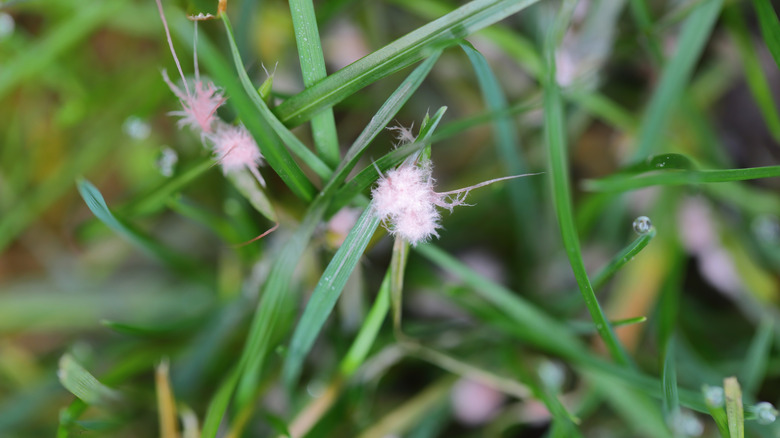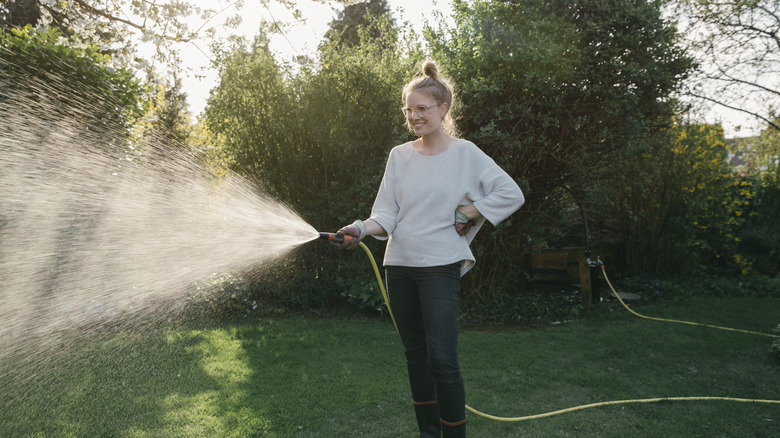What's Causing Red Thread To Grow In Your Lawn (& What To Do About It)
We may receive a commission on purchases made from links.
If you're seeing weird pinkish-red patches of threads in your lawn, it's most likely red thread disease caused by the fungus Laetisaria fuciformis. This common lawn disease thrives in cool, damp weather and typically appears in late spring and fall when temperatures are slightly cooler but the humidity is high. The fungus attacks the leaf tissue of grass without killing it. Poor soil nutrition, specifically low nitrogen, will create the perfect condition for red thread since the weakened grass can't fight the fungus invasion as well. You can even make a DIY test to keep track of your soil's health. Compacted soil, thatch buildup, and poor mowing practices also promote red thread.
Unlike some lawn diseases that require drastic measures to fix, red thread is more an indication of the surrounding area's issues than a severe fungal problem. The fungus spores spread the disease through mowing and foot traffic. It usually affects cool-season grasses like fine fescues, ryegrass, Kentucky bluegrass, and other varieties. It's often easiest to see in the early morning when the dew makes the reddish threads more visible, or when sections of your lawn look less green than others during growth periods. The good news is that with proper adjustments, red thread can be resolved without chemical treatments.
How to treat & prevent red thread disease
The most effective way to control red thread combines an immediate treatment with long-term lawn health improvements. Begin by applying a slow-release nitrogen fertilizer to take care of the nutrient deficiency that is making your grass vulnerable. This can often clear smaller cases of red thread all on its own within a few weeks. For larger, active infections, rake the area to remove any dead materials and improve circulation before applying a fungicide formulated for these types of issues, like this BioAdvanced Fungus Control for Lawns on Amazon. You'll also want to adjust your watering routine. Water deeply, but infrequently, preferably in the morning, which is the best time to water your lawn and allows the grass plenty of time to dry before nightfall.
Long-term prevention is more about creating unfavorable conditions for the fungus. You'll want to aerate compacted areas to improve drainage and root development. Keep your lawn a good height by following the 1/3 rule, and try to leave your grass around 3 inches in length. You can also overseed with red thread-resistant grass, like bahiagrass, which will outcompete the fungus. Take time to test your soil every few years to keep track of nutrient levels, paying special attention to nitrogen and potassium. For more extreme cases in shady areas, consider trimming surrounding trees to increase sunlight or transition to a more shade-tolerant ground cover. With consistent care and attention to detail, most lawns can fully recover from red thread within a single season.

